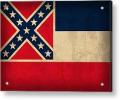MY UNCLE AND THE BATTLE OF CORAL SEA
By Doug Bowser
My Uncle Frank was 34 years old in 1942. He spent 8 years on the Great Lakes in the Merchant Marine. On December 10, 1941 he was sent a notice to travel to San Diego, to be inducted into the US Navy. He was flown to Hawaii and was assigned to the US Carrier Lexington (CV-2). He was given the job in Damage Control. The ship sailed toward the Coral Sea and its ultimate destruction. The Battle of Coral Sea was the first Naval Battle that the participants never saw the other side. It was fought entirely by aircraft. It took place on May 4-8, 1942.
The damage done by the American Fleet was the sinking of the Light Carrier Shoho, we severely damaged the Fleet Carrier Shokaku, sunk 3 small ships and depleted the aircraft and pilots from the Fleet Carrier Zuikaku. The damage to the Shokaku and the loss of aircraft from the Zuikaku weighed heavily in the Battle of Midway. If the Japanese had these Fleet Carriers available for the Battle of Midway, we might not have faired as well in that conflict.
The Japanese sunk the Lexington, a Destroyer, an oil tanker and damaged the USS Yorktown. The Japanese won a tactical victory in this battle but it was the first time the US Navy was able to stop a Japanese advance, in its tracks.
On te second day of the Battle, my Uncle was fighting fires on the Lexington. They had an armor piercing bomb pierce many decks and land in a 20mm ammunition locker. He and two other damage control personnel went a deck above the locker and there was a 16” hole in the deck, leading into the locker. They ran a 4” water line, shoved it into the hole in the deck and flooded the ammunition locker. If the locker would have blown, it would have killed many men.
The ship had become an inferno below decks and even though the fuel lines were pumped full of Carbon Monoxide, the ship suffered a tremendous internal explosion. It was damaged so badly they decided to abandon ship and scuttle the Lexington. My Uncle was topside when the ship exploded. The Lexington was laid down as a Battle Cruiser and converted to an Aircraft Carrier. This made the flight deck higher off the water than other Carriers such as the Yorktown. The order to abandon ship was given and there was no time to rig ropes down the side of the ship. The ropes would have been used by the sailors, to let themselves more gently in to the Sea. My Uncle had a Mae West life jacket. The life jacket was used deflated while jumping into the Sea and inflated by small CO2 bottles after getting into the water. He estimated the Lexington’s flight deck was 100-120 feet above the Sea. If you jumped with the vest inflated it could break the arms of the sailors wearing it. His biggest fear was landing on another sailor or having one land on him. I asked him why he jumped off the flight deck and he said his deck shoes were on fire.
He survived the jump uninjured and was returned to Pearl Harbor. He was immediately assigned to the USS Yorktown and within 4 days he was sailing toward the Battle of Midway.
I am proud to relate the stories told to me by my relatives who fought in WW2. I believe it is important to record these incidents for posterity.
USS_Yorktown_(CV-5)_Jul1937.jpg
USS Yorktown
USS Large_explosion_aboard_USS_Lexington_(CV-2),_8_may_1942.jpg
Lexington explodes
USS Lexington CV-2a.jpg



 Reply With Quote
Reply With Quote




